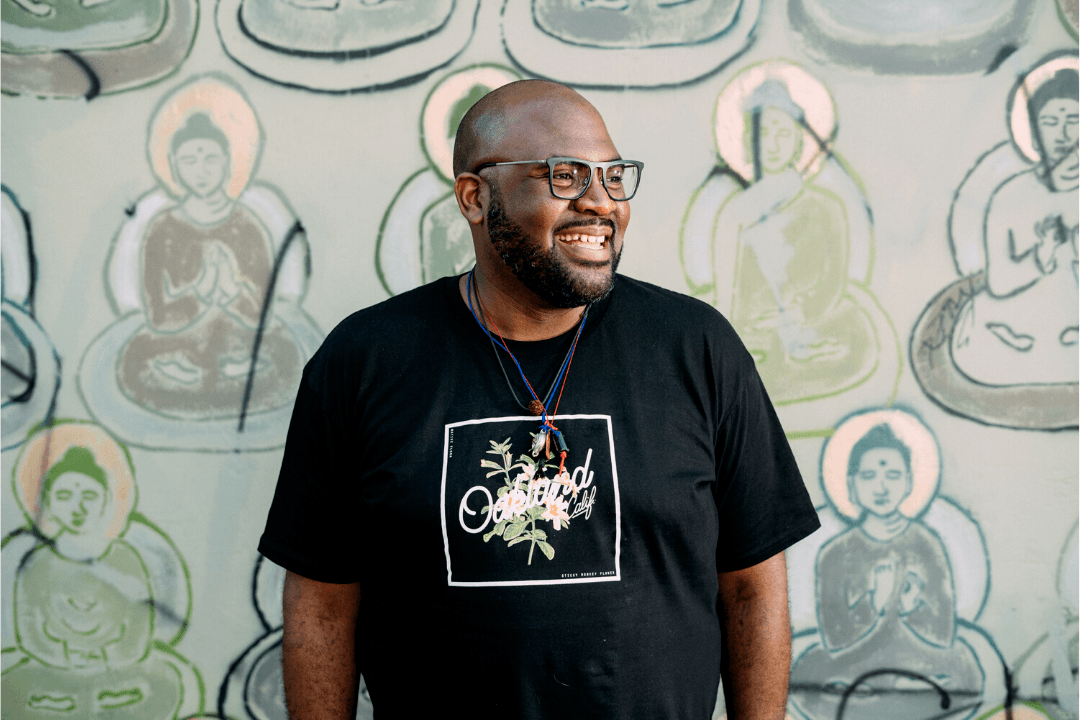On Collages and Color
Stephen Batchelor began making collages from found materials in 1995. Until recently, however, they were seen only by a few family members in Stephen’s home. This changed on May 20, 2023, when a small exhibition of eight collages opened...
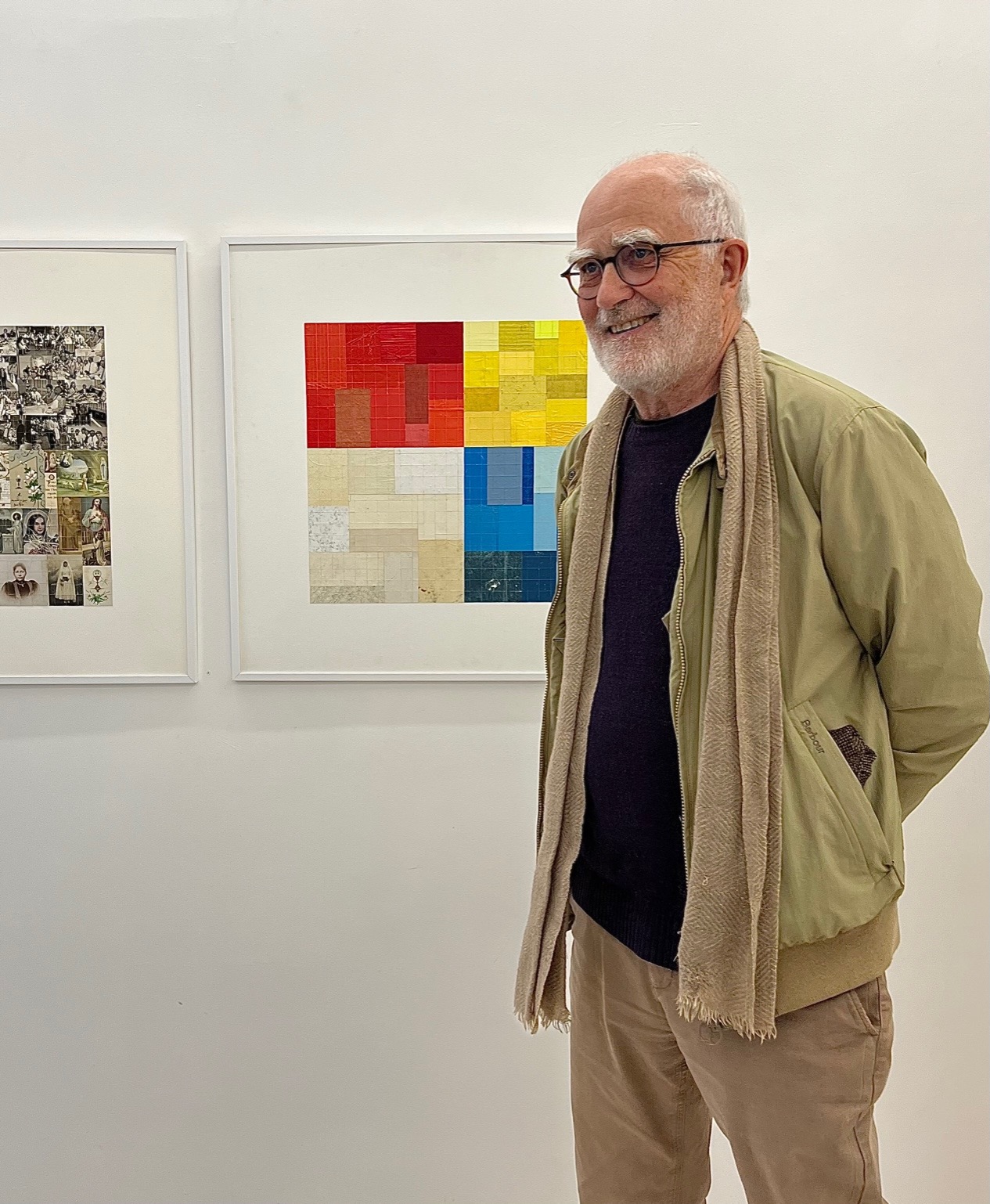
Stephen Batchelor began making collages from found materials in 1995. Until recently, however, they were seen only by a few family members in Stephen’s home. This changed on May 20, 2023, when a small exhibition of eight collages opened at Galerie 727, in Montmorillon, France. The show, which included both old and recent work, was curated by Keith Donovan, Galerie 727’s director.
I attended the opening of the exhibition, and interviewed both Stephen and his brother, David Batchelor, in the gallery the following day. Surrounded by the collages, and in front of an audience of about twenty-five people, we discussed what it meant to Stephen to see his work in an art gallery setting for the first time. We also considered how David, an artist and writer who has focused on color for more than thirty years, viewed Stephen’s work as well as how their relationship as brothers—Stephen is two years older than David—may have impacted the work on the walls.
The following is an edited version of our public conversation. For more information about Stephen’s collages and his process, read Stephen’s article “Bringing Collages to Life.”
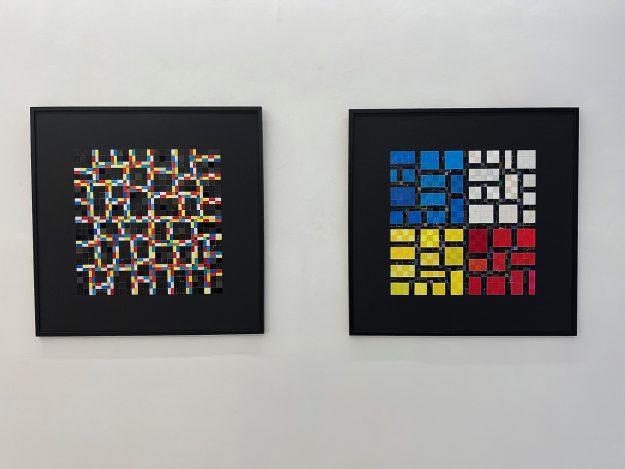 Recent collage series, panels one and two.
Recent collage series, panels one and two.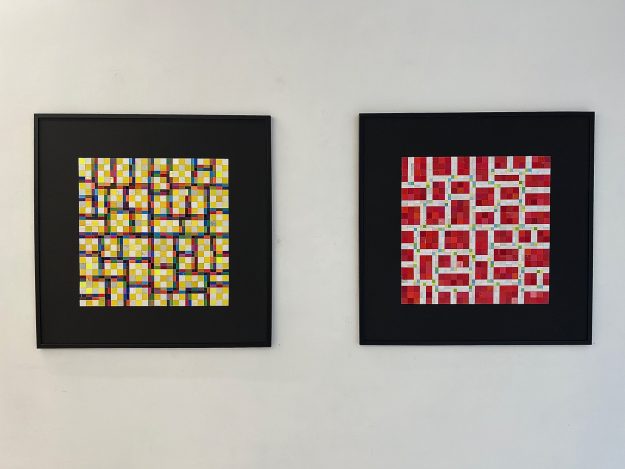 Recent collage series, panels three and four.
Recent collage series, panels three and four.
Ronn Smith: This is the first time you are seeing your collages on white walls in a public space, Stephen. Looking at them in this environment, do you see the work differently?
Stephen Batchelor: I hang them on walls at home, where they are seen by Martine and family members, but they are intensely private pieces of work. I discovered at the opening of the exhibition last night that once the collages are shown publicly, they cease to be mine. It was both awkward and fascinating to watch people looking at the work, to see how complete strangers entered into a relationship with the collages. They do so in a way that is completely independent of any intention I might have had in making them. It is a “letting go” in Buddhist language, and in that way they take on a kind of completion. Until this show happened, they were still incomplete on some level.
RS: David, as someone who has devoted his professional life to color, what do you see when you look at Stephen’s collages?
David Batchelor: We all experience color, but we can’t fully commit it to language. Color always escapes our attempts to codify, describe, or explain it. It’s impossible to know color, but for me that is precisely what is so compelling about it.
What I see in Stephen’s collages is a willingness to let color drive the work. There’s a willingness to embrace color, to gain pleasure from color. We often subordinate color to symbolic, mathematical, expressionist, or philosophical notions about meaning. Stephen’s work is free of those tendencies, and I like that.
Take this work, for example. There are more than four colors in it, but the four color names we associate with those blocks are red, yellow, blue, white. I’m told they are the four primary colors of Buddhism, but I didn’t know that … and frankly I don’t care [laughs]. It interests me to know what motivated Stephen to make this work, but for me it’s about acknowledging and enjoying the sense that there is no one thing we can call red, yellow, blue, or even white. Color is multiple, always. When Stephen said they were the four primary colors of Buddhism, that’s subordinating color to something else. And for me, it doesn’t matter.
RS: Does that matter to you, Stephen?
SB: I’ve struggled with this. I don’t start as a collage maker, but as a Buddhist scholar and practitioner. When I create these works, I tend to read them through the matrix of ideas I already inhabit—those of Buddhist philosophy. But the start of this process had absolutely nothing to do with Buddhism. I was on a train from London to Devon in 1995, and I put the stuff in my pockets and bag out on the table. And suddenly I thought: this rubbish could become not rubbish, not stuff that I would otherwise throw away, disregard, reject. That was the primary trigger for beginning the process of organizing found material and making these collages.
I now see my collage work as a conversation between the imagination, which is working through the nonconceptual elements of found colored paper, cloth, plastics, and so on, and my own struggle to make sense of what Buddhism means. In that way, I see it as a dialectic. Every collage series I make is an accompaniment to a book I am writing. This doesn’t mean I’m writing a book and thinking: what color should I put there? No, they are completely separate processes. But in some way they support each other.
For me, the fourfold-ness of all of these works is not just about the four primary colors of Buddhism, but that the Buddhist philosophy and practice is very much founded on multiples of four. I like to think of this fourfold-ness in Buddhism as a kind of primary logic that helps us come to terms with being human in this world. In that regard, I see my books and these collages as trying to articulate something in common, but what that something is I can’t really say.
RS: Texture plays an important role in these collages. Could each of you talk about the texture of these works?
DB: Color is never fully independent of the material that carries it. All of the colors we deal with are embodied in materials, and those materials have their own qualities of weight, transparency, reflectiveness. That just adds another dimension to the experience of color.
SB: I need to acknowledge at this point that the focus on color is in fact inspired by David’s own work with color. I don’t know if I would have done these works if he had not been doing something of a very similar nature.
DB: You never said that before [laughs].
SB: But it’s true. Your interest in color stimulated a similar curiosity in my own mind, but I work exclusively with materials I find on the street—wherever people drop or throw it away. It’s not like something you find in an art supply store. In other words, it’s not a nice, pristine sheet of blue, red, or yellow paper. By working with found materials, I’m working with materials that to a large extent are damaged or distressed.
DB: In other words, they have already had a life.
SB: Exactly. They’ve had a life. They’ve done something.
DB: And that life shows up in the work somehow.
SB: That’s exactly how it works, David. Kids will eat a bar of chocolate, and then they’ll crunch up the little green wrapping paper and throw it away.
DB: Idiots.
SB: Not idiots. I’m very grateful for these people, or else I wouldn’t have any material. They chuck the wrapper, and a car might drive over it. So when I glue it to a flat surface, the complex wrinkles are still embedded in that piece of color. This is what makes that particular piece of color much more interesting than something I could have bought in a shop. The texture becomes incredibly important, but it also affects the way light reflects off the work.
DB: There’s a fabulous quotation by [French poet] Charles Baudelaire who said that modernity is “the ephemeral, the fugitive, and the contingent.” I think it’s a beautiful summary of what was important for Baudelaire and contemporary artists to attend to—those fleeting, transient moments of everyday life that you might otherwise ignore, or just not see. Baudelaire then followed that by saying (and this is the bit everyone forgets): but that is the half of art, the other half is “the eternal and the immutable,” whatever that might mean. For Baudelaire, art must attend to the everyday, but it also has to attend to what I would say is its history, its longevity. Art is about the world we encounter directly, but it is also about every work that has ever been made. You have addressed the modernity of your work, Stephen, but it also is embedded in the tradition of collage that is at least one hundred years old.
RS: How has your relationship as brothers informed what each of you are doing now? What kind of influence have you had on each other?
DB: We were brought up in a town outside of London. We are both very aware, I think, that our mother always directed us toward the visual arts. We were strongly encouraged to enjoy the visual arts in whatever way we wanted to. We had art books and magazines. When I was a young teenager, Stephen began taking photographs, and for several years photography was your principal interest. And then what happened?
SB: In England, when you turn 18, you have to pass A Level exams. I had been offered a place in a course on photography at the Regent Street Polytechnic, in London, but to get that place I had to pass two A Levels. I was taking French and art at the time. I did quite well in French but failed the A Level in art. If I hadn’t failed art, I would have gone to Regent Street Polytechnic and studied photography.
But because I failed the A Level, I had at least a year ahead of me with nothing to do. I told our mother that I was going to hitchhike around Europe, go to art museums and galleries, and educate myself in European culture before taking the A Level again. Of course that didn’t happen. After two or three months hitchhiking around Europe, I followed the very strong drift east, and in 1972, I ended up in Dharamsala, in the community around the Dalai Lama. From that point on, my life took on another direction, that of Buddhist scholarship, which has been my career.
DB: I passed my art A Levels, but I failed French. [laughter] It’s actually true. But the pleasure for me is the recognition of how volatile …
SB: Or contingent.
DB: … how contingent everything is as a result of one failed exam. You can never fully explain these moments logically, but they can shape your entire life.
SB: True.
DB: We were occasionally in touch during the fifteen years Stephen was away, but it wasn’t until he and Martine moved to Devon in 1985 that we began really to talk with each other. Instead of going off in different directions, it made me feel we had responded differently to the same set of anxieties, worries, dissatisfactions with England in the 1960s.
SB: Working as a full-time Buddhist in the West means that you’re more or less living in a relatively small bubble of people with similar interests. As David said, Martine and I were living in Devon and involved in a meditation center, but to some degree we were still marginal, working on the fringe. But my relationship with David allowed me to have a conversation outside the world in which I was embedded. It was through David, in particular, that I was able to conduct a conversation with the world of art and aesthetics not only through his own work but by meeting his friends and going to galleries in London.
That was very, very fruitful both personally and in what I think of as the main thrust of my writing work, that is, how do we bring East and West together? How do we bring a non-native religion like Buddhism into the discourse of modernity that we experience in this secular world? My engagement in art, particularly through David, provided a vehicle by which I could explore that particular dimension of my relationship with my own culture.
In some respects, I see this artwork as a way to allow Buddhist ideas to be freed of Buddhism.
It also helped me find a language—not just a spoken or written language, but an aesthetic language—in which I could express myself in terms of my interest in Buddhist ideas. I think Buddhism is quite rigid, a bit stuck in its aesthetics. I love Buddhist art, but I don’t see it really going anywhere anymore. I feel that if Buddhist ideas are to really engage our culture, they must do so through the arts, through film, theater, painting, whatever it might be. In some respects, I see this artwork as a way to allow Buddhist ideas to be freed of Buddhism, and to help us find another cultural discourse that can address the issues of our world today.
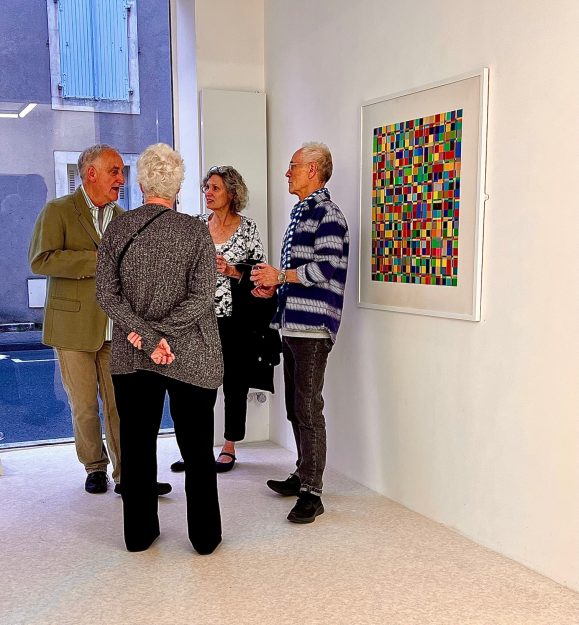 L-R: Kirk Purvis, Sherry Woods, Nancy Griffin, David Batchelor.
L-R: Kirk Purvis, Sherry Woods, Nancy Griffin, David Batchelor.
 AbJimroe
AbJimroe 








